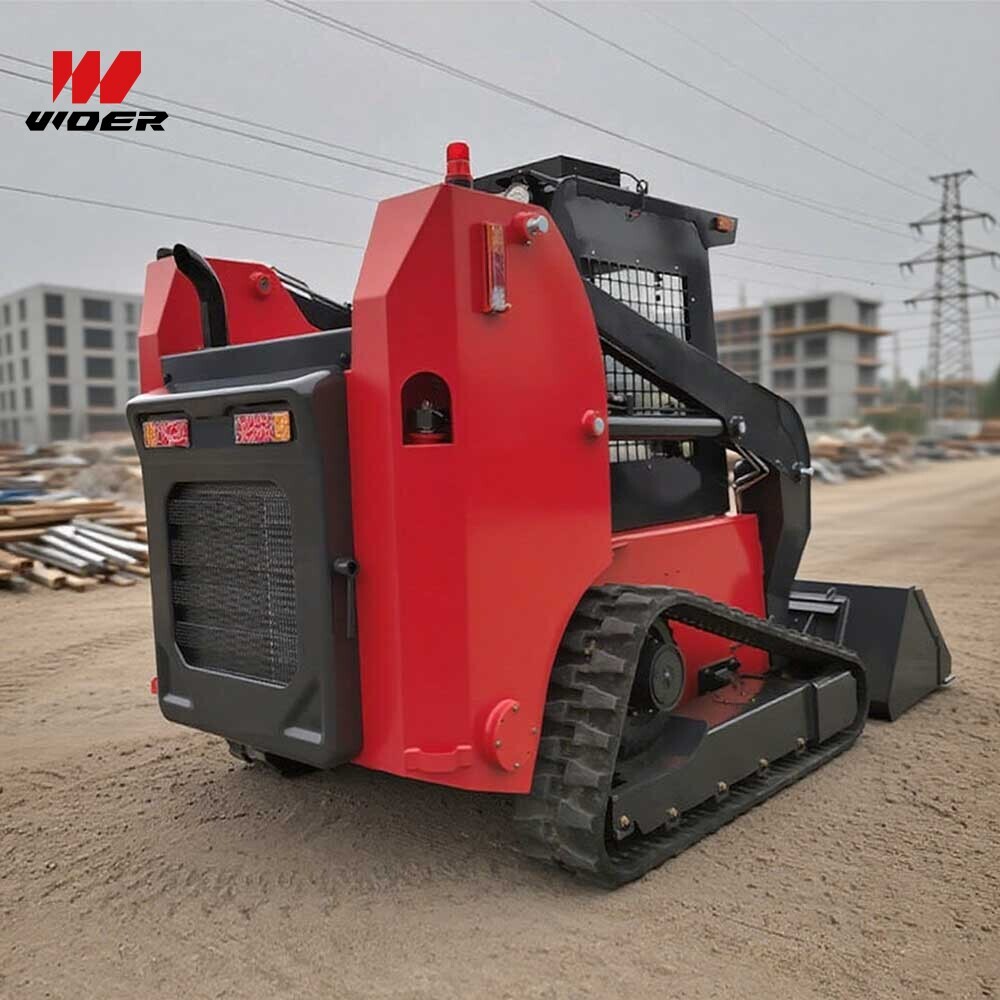Navigation
Contact us
Phone
Message

Why small skid steer loaders excel on tight job sites
Small skid steer loaders deliver high power-to-size ratios that suit narrow aisles, uneven terrain and indoor timber processing areas. A mini skid steer wheel loader or a tracked alternative preserves stability when lifting while enabling access where larger machines cannot. Operators benefit from reduced ground disturbance, faster cycle times, and simpler transport logistics—critical in busy lumber yards and compact construction sites.
Key operational advantages
- Compact footprint for confined environments and loading docks.
- High maneuverability: skid steering and tight turning radii.
- Adaptability: compatible with forks, grapples, buckets and log-handling attachments.
- Choice of drive systems: mini skid loader wheel options for speed, or track systems for traction and flotation.
Technical performance and configuration considerations
When evaluating models, prioritize rated operating capacity, hydraulic flow and breakout force. For wooded or soft-ground job sites, a small skid steer track loader with rubber tracks offers improved traction and lower ground pressure. Conversely, a mini skid steer wheel loader delivers faster road transit and often lower maintenance costs. For heavy-duty continuous operation, consider track skid steer loader diesel engines for fuel efficiency and torque.
Checklist: specifications to compare
Model comparison: wheel vs track options
Below is a practical comparison to guide selection. Pricing varies with configuration; while cheap skid loaders for sale may be attractive, validate warranty, parts support and resale value.
Procurement guidance and cost drivers
When shopping among skid steer loaders for sale—including listings or imports like a china skid loader—evaluate total cost of ownership (TCO) rather than sticker price alone. Cheap skid loaders for sale can lower capital outlay but may raise downtime and service costs. Key cost factors include engine type, availability of spare parts, local dealer network, and attachment ecosystem.
- Confirm parts and service availability in your region.
- Request real-world fuel consumption and hydraulic performance data.
- Check compliance with standards such as ISO, EN or local emissions regulations (e.g., EPA, Stage V) when applicable.
- Factor in transport, attachments, and training costs.
Maintenance, safety and common pitfalls
Routine maintenance extends equipment life and preserves resale value. For tracked machines, inspect sprockets and rubber track condition regularly; for wheeled machines, monitor tire wear and correct pressures to optimize mini skid loader wheel lifespan. Always follow manufacturer service intervals for hydraulic filters and engine oil—neglect here causes most costly failures.
Safety protocols in timber facilities should reference relevant standards (e.g., ANSI for mobile equipment, local workplace safety codes). Train operators on safe lifting envelopes, attachment locking, and emergency shut-offs. Common mistakes include undersized machines for lift needs, incorrect attachment selection, and skipping pre-shift inspections.
Case insight: industry application
A mid-sized sawmill replaced two full-size loaders with compact small skid steer loader units and reported 18% faster loading cycles in the sorting area. The tracked variant reduced ground rutting during wet months and lowered downtime tied to ground conditions. This demonstrates that matching machine attributes to site constraints yields measurable productivity and cost benefits.
Standards, certifications and quality checks
Prioritize models with documented compliance to quality and safety standards—ISO manufacturing audits, CE/EN for structural components, and emissions certifications when operating in regulated zones. Request test reports for hydraulic systems, lift ratings and fatigue testing if long duty cycles are expected.
Why choose us and next steps
We combine hands-on field experience with engineering evaluation to match the right small skid steer loader to your site. Whether you need a reliable mini skid steer wheel loader for an indoor mill or a robust track skid steer loader diesel for outdoor timber yards, our assessments focus on operating cost, uptime and attachment flexibility. Contact our sales engineers for a site evaluation, model demo and a transparent TCO comparison that highlights the best value among skid steer loaders for sale.
To arrange a consultation or request specification sheets and financing options, reach out via our contact channels and reference the compact models recommended in this guide. Choosing correctly today reduces downtime tomorrow and protects margins on every project.

This stunning beach house property is a true oasis, nestled in a serene coastal community with direct access to the beach.
Contact
West Street, Melbourne Victoria 3000 Australia